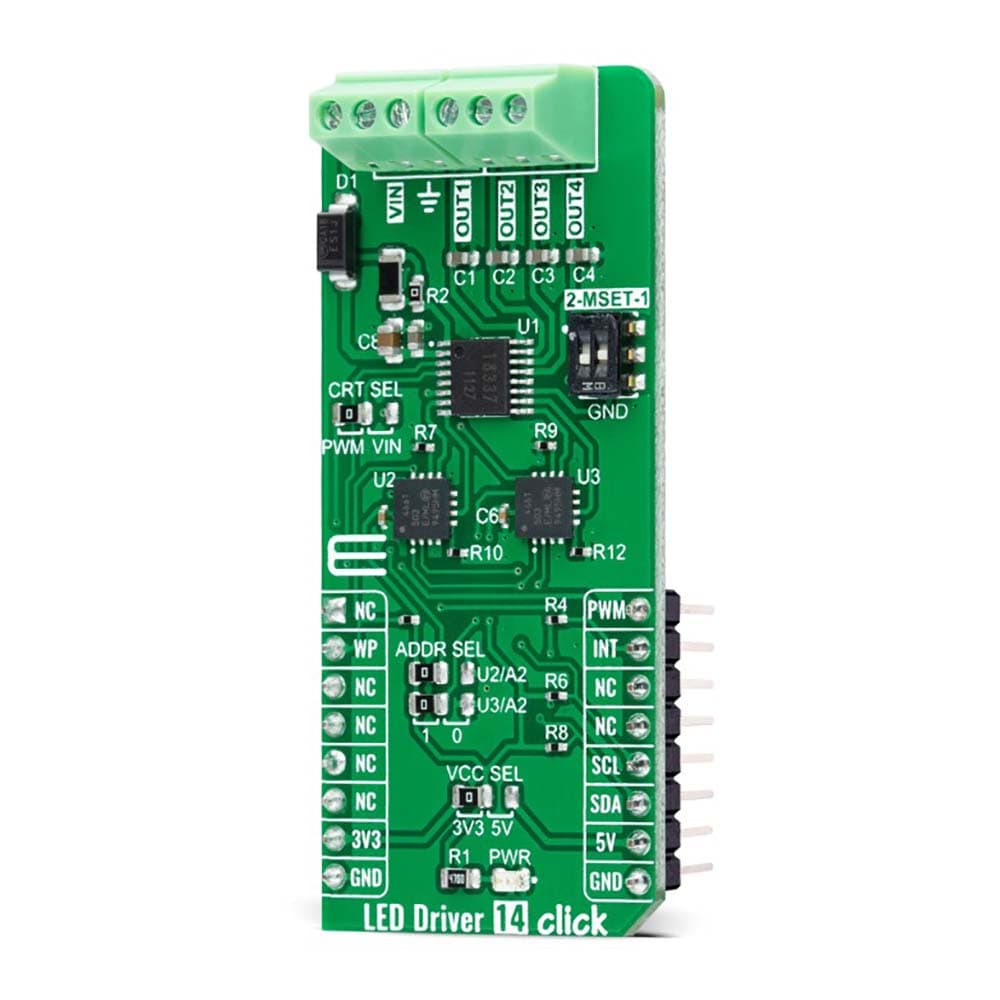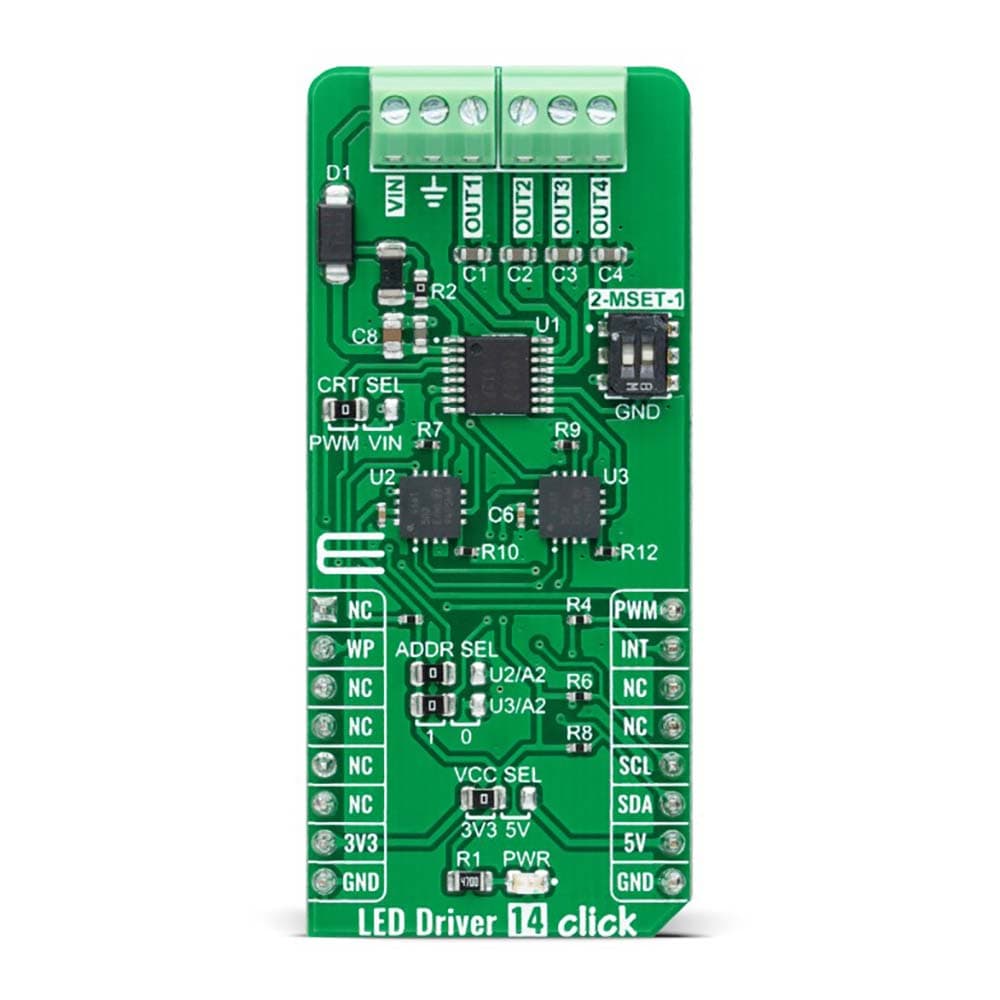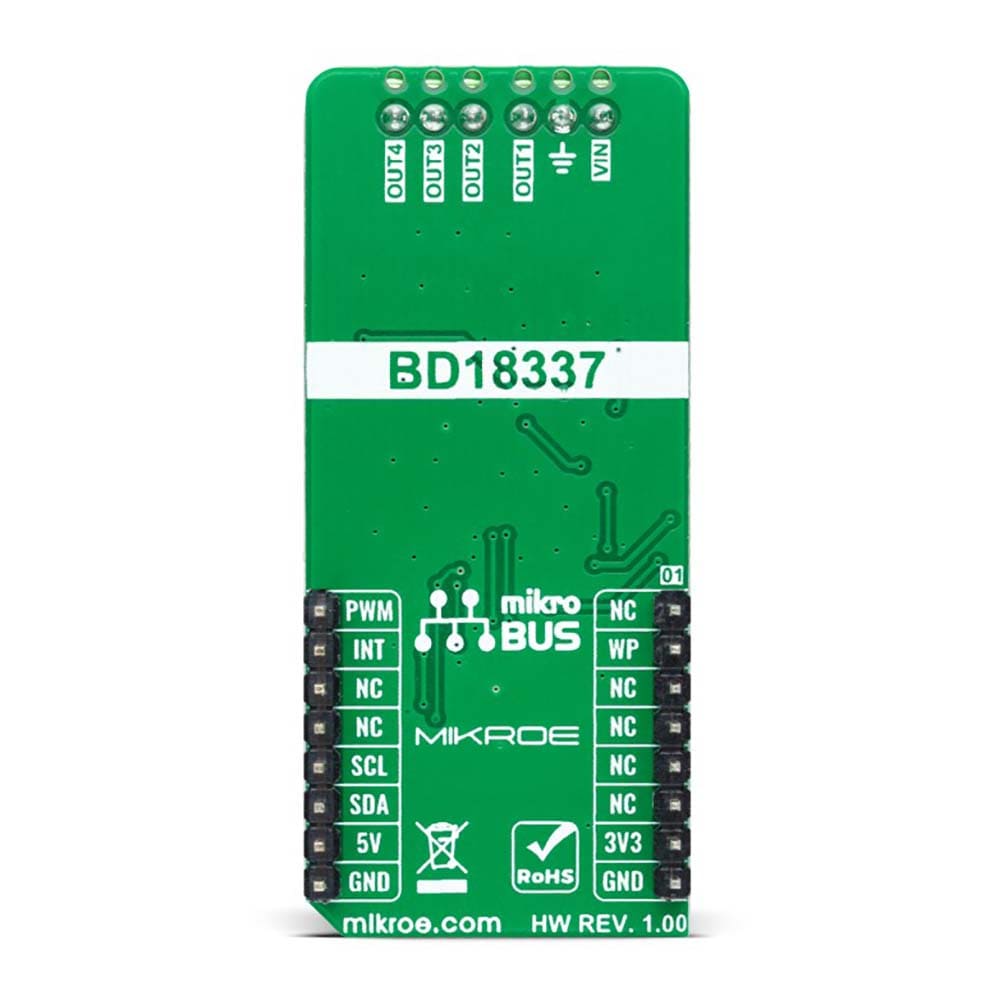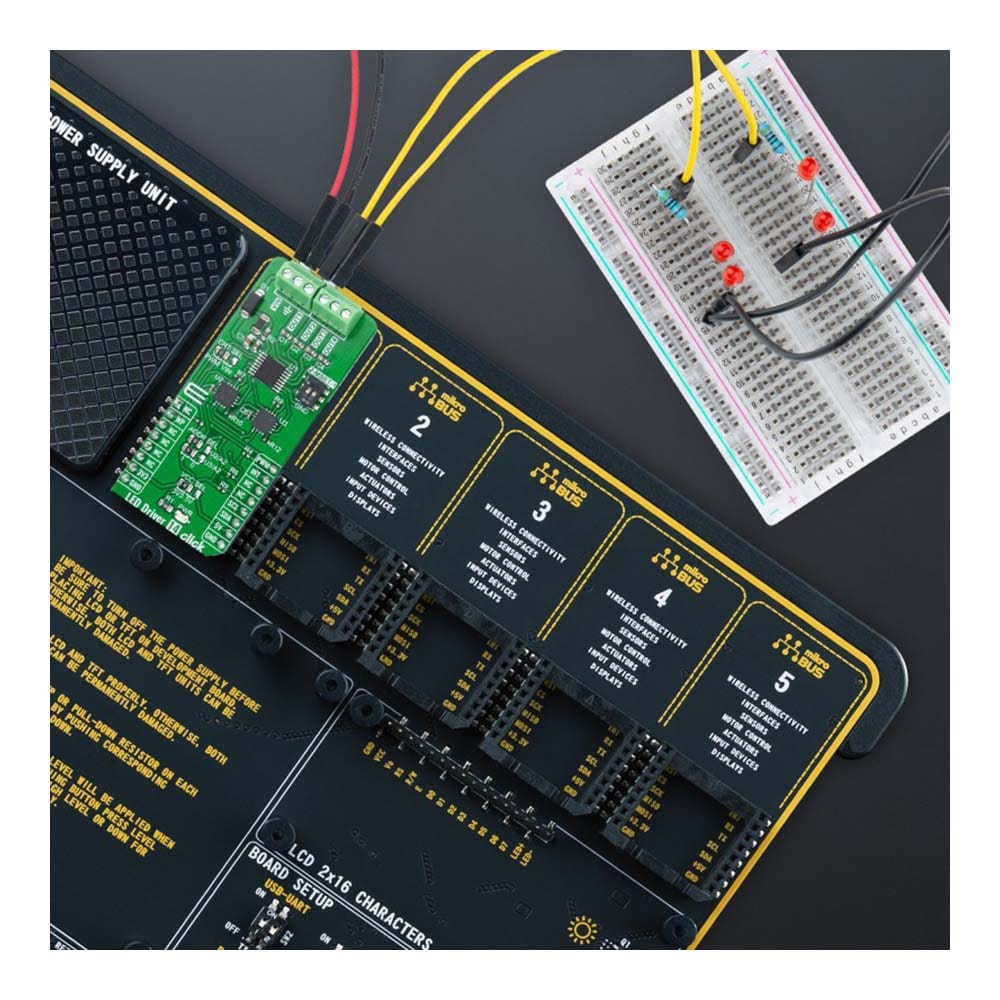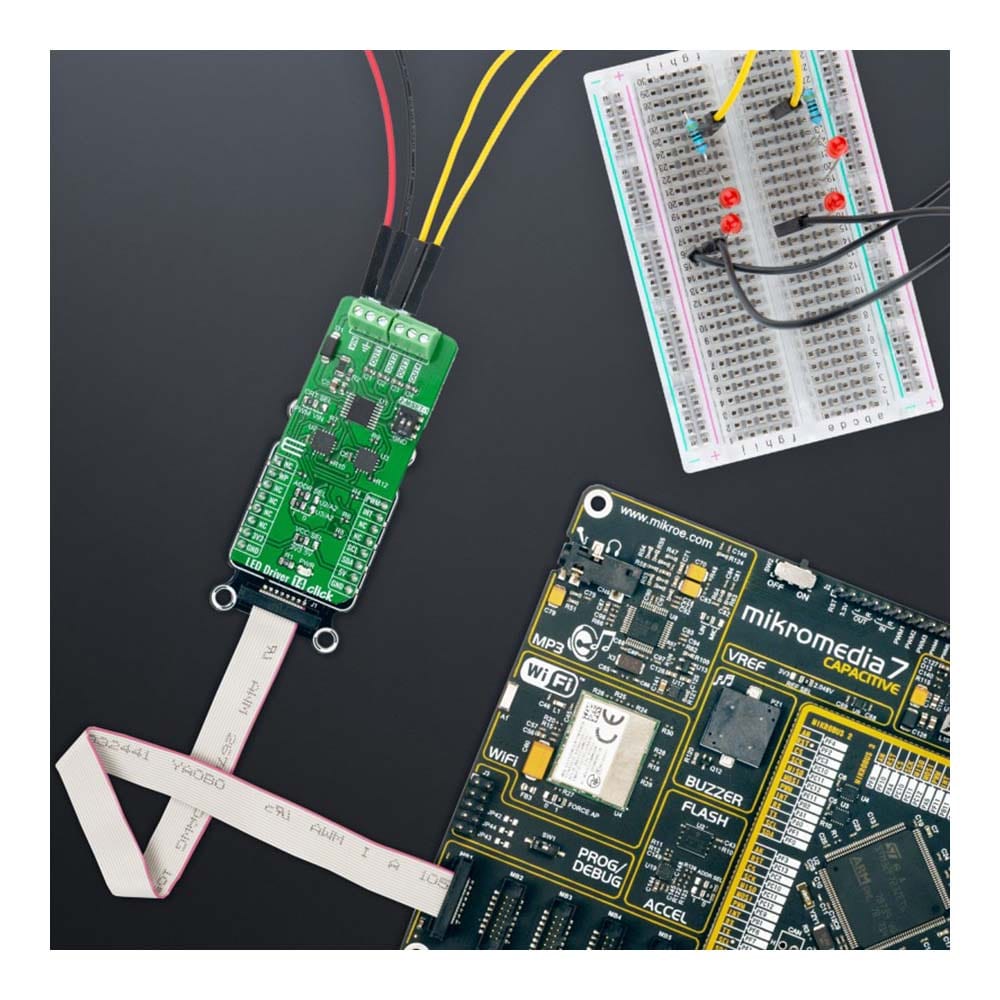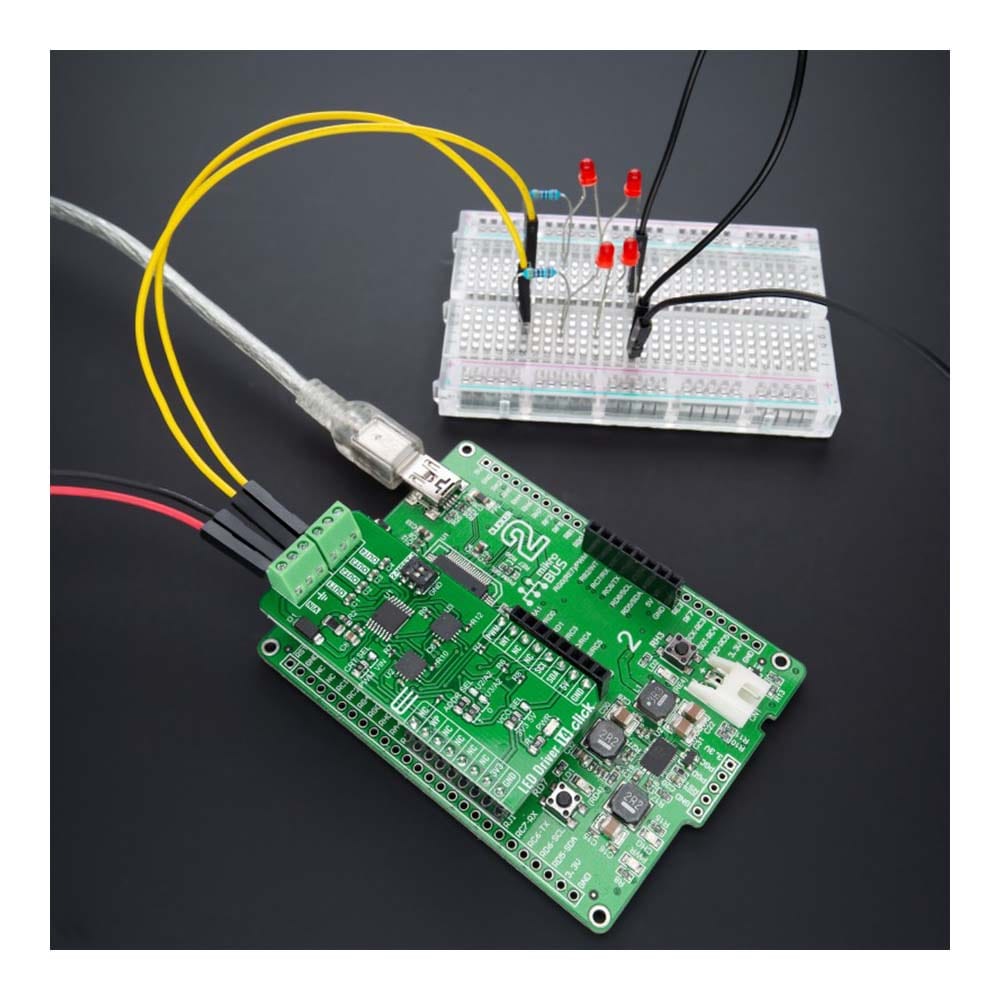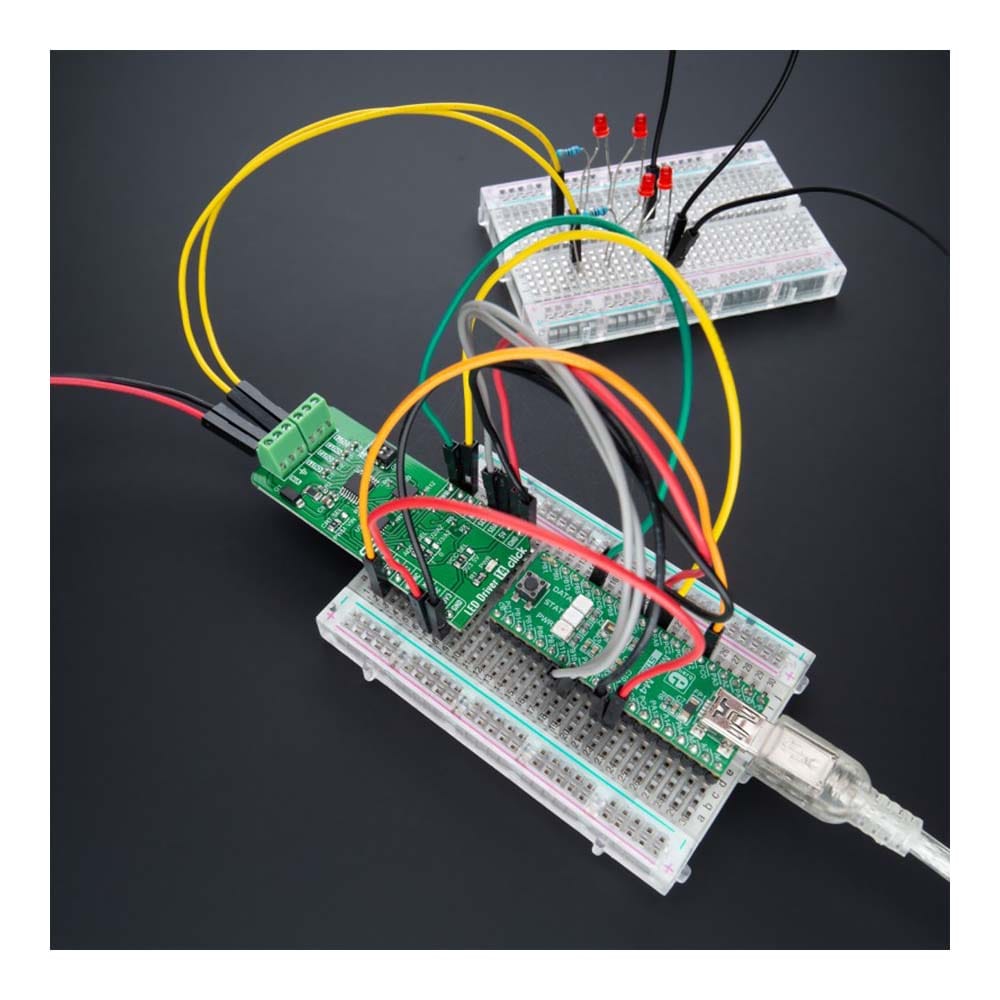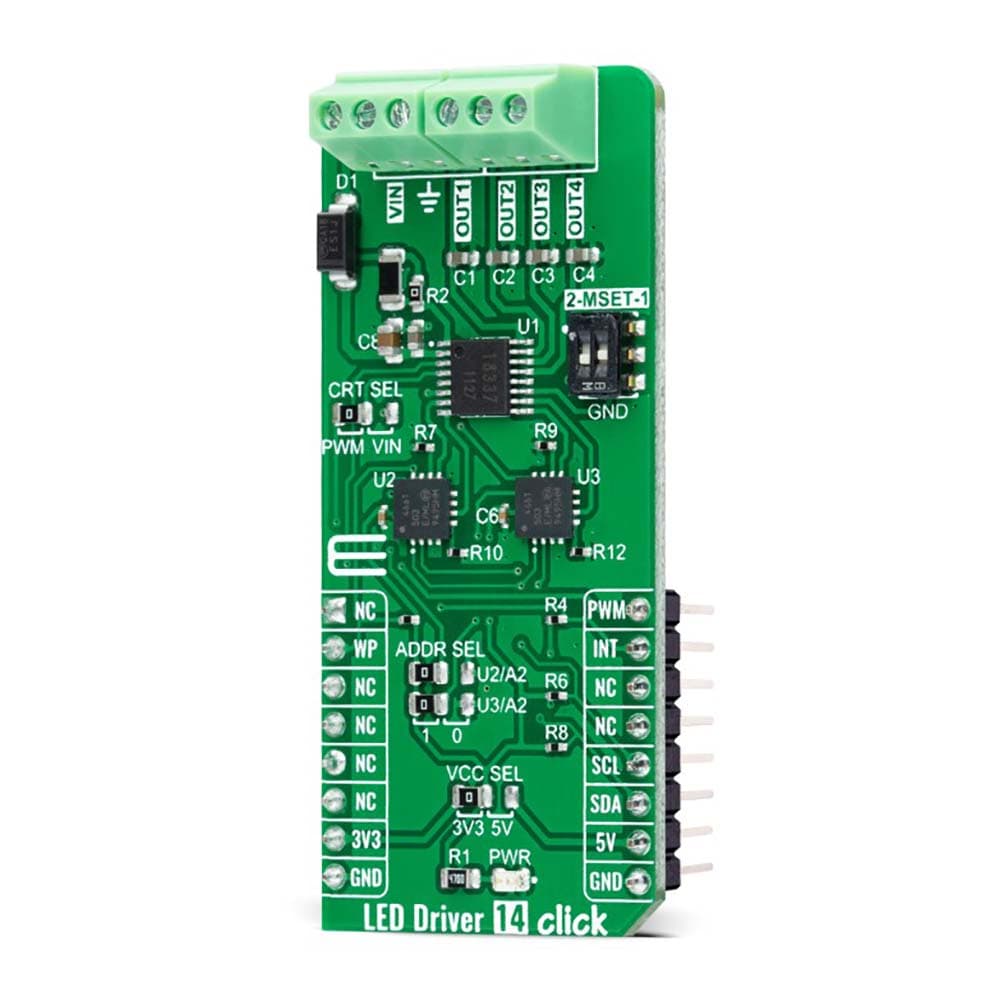
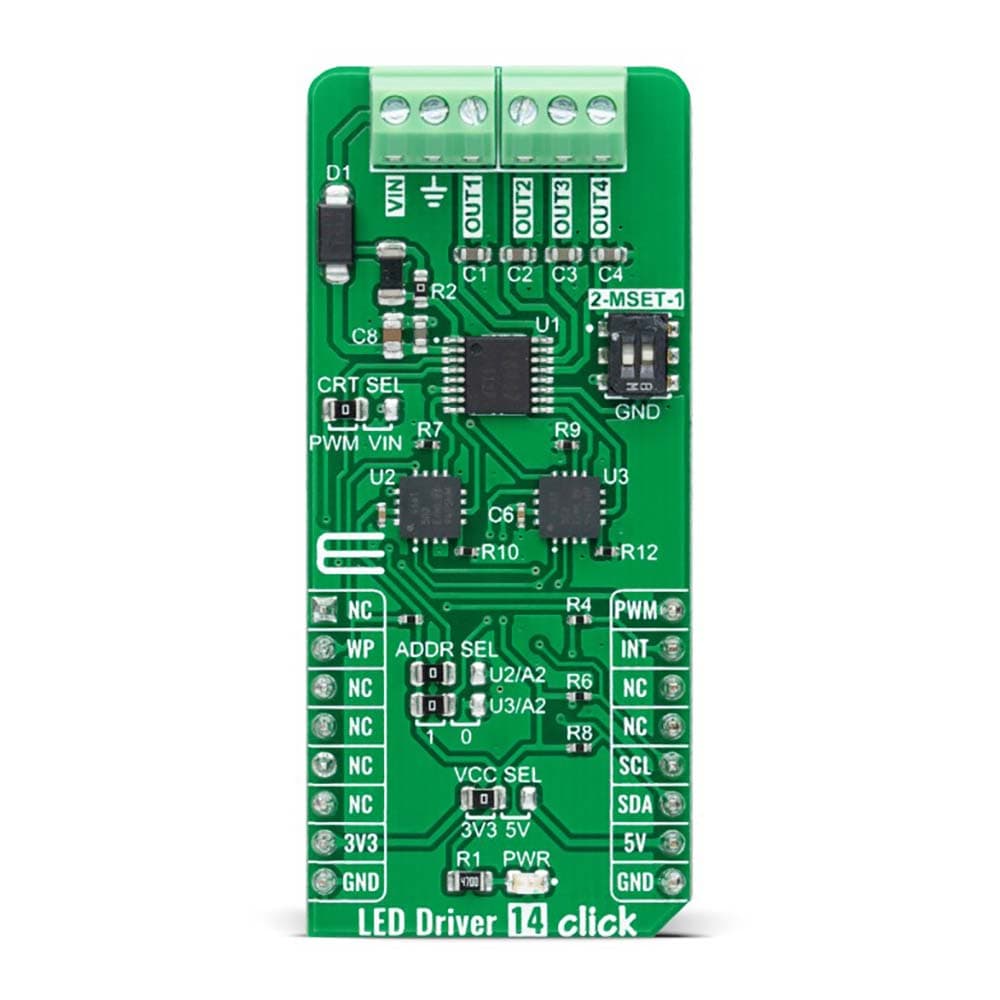
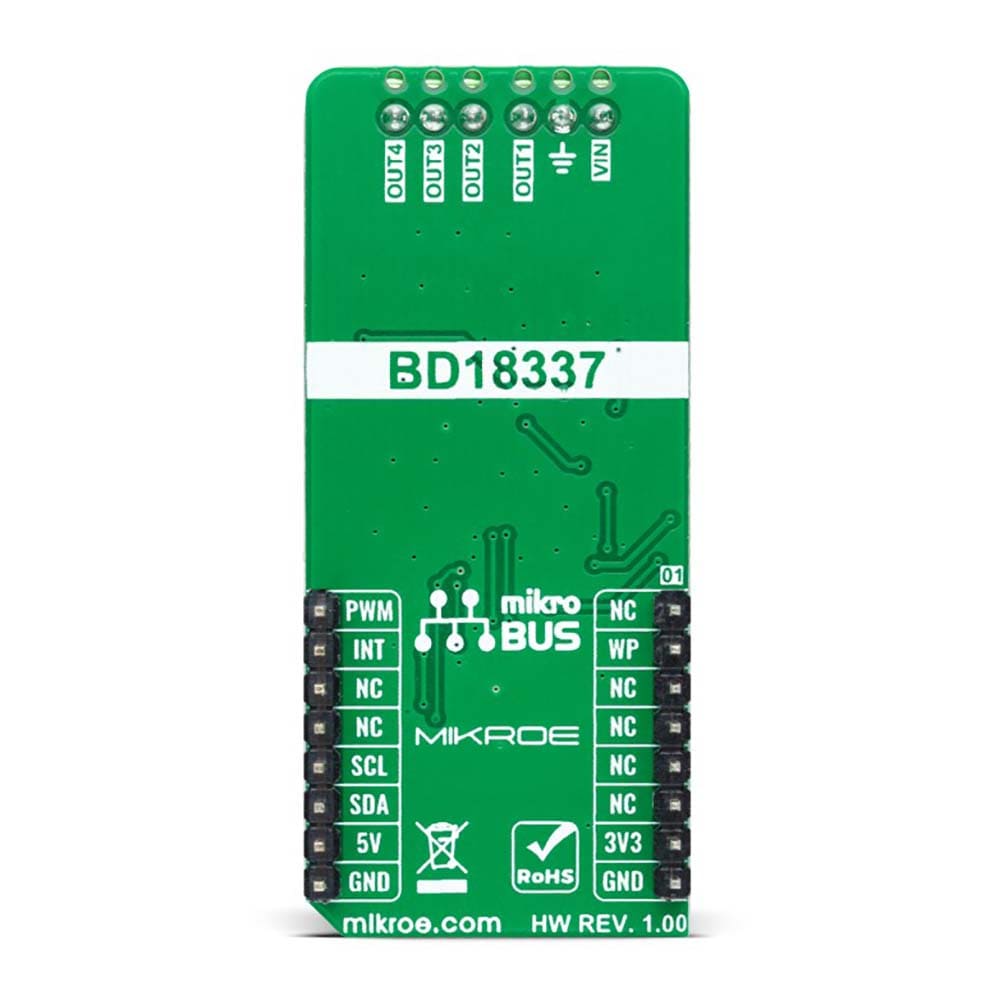
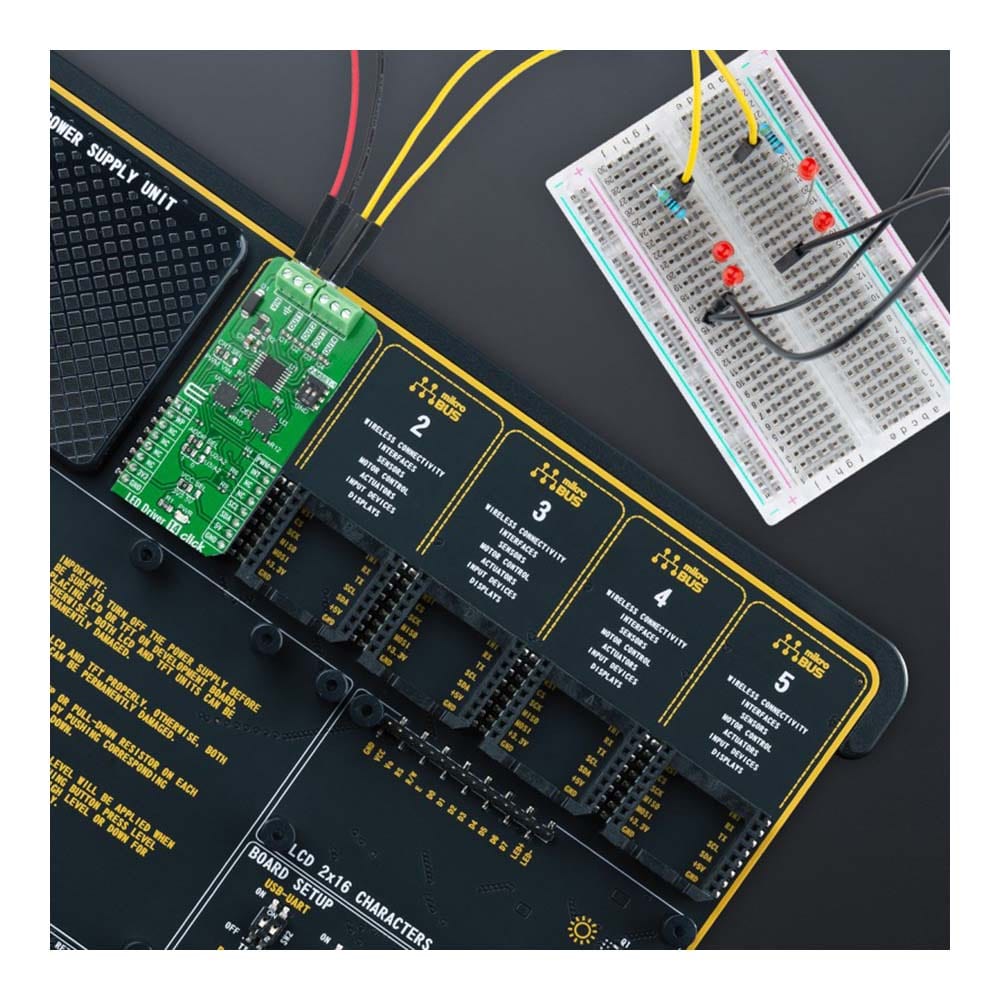
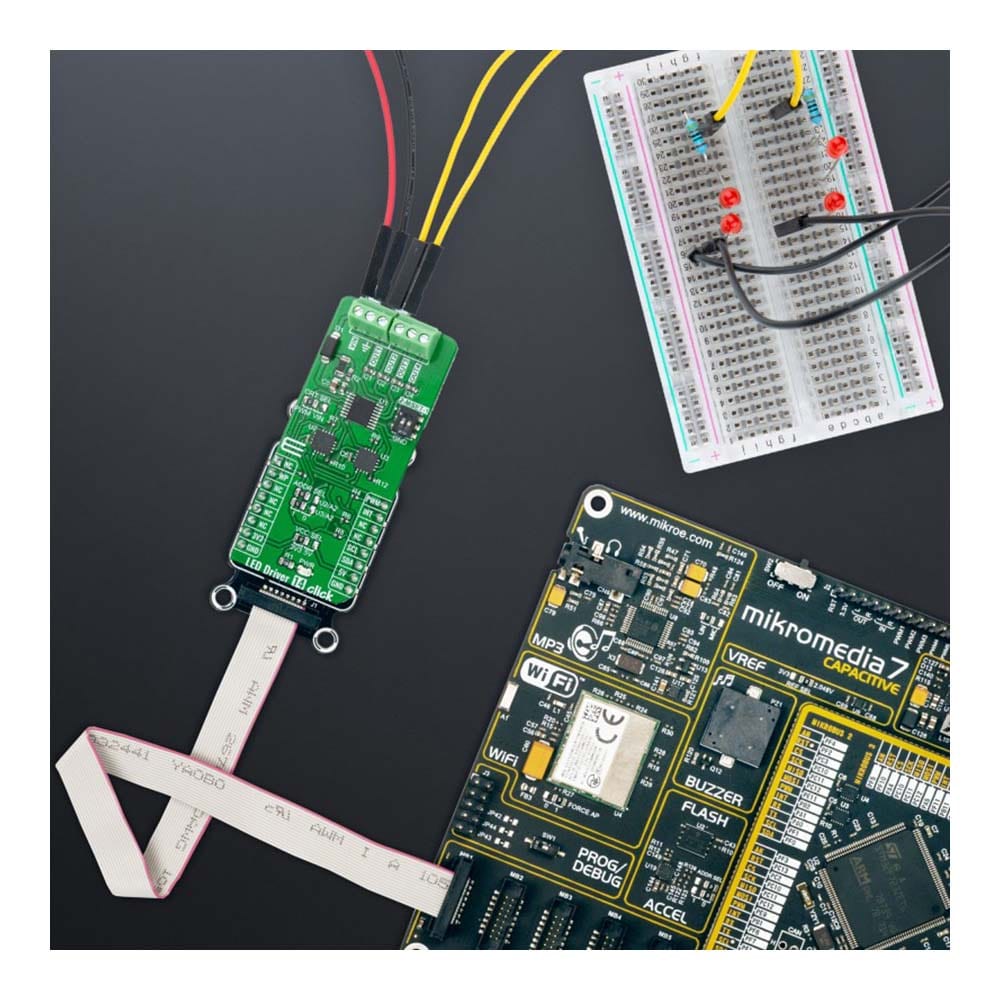
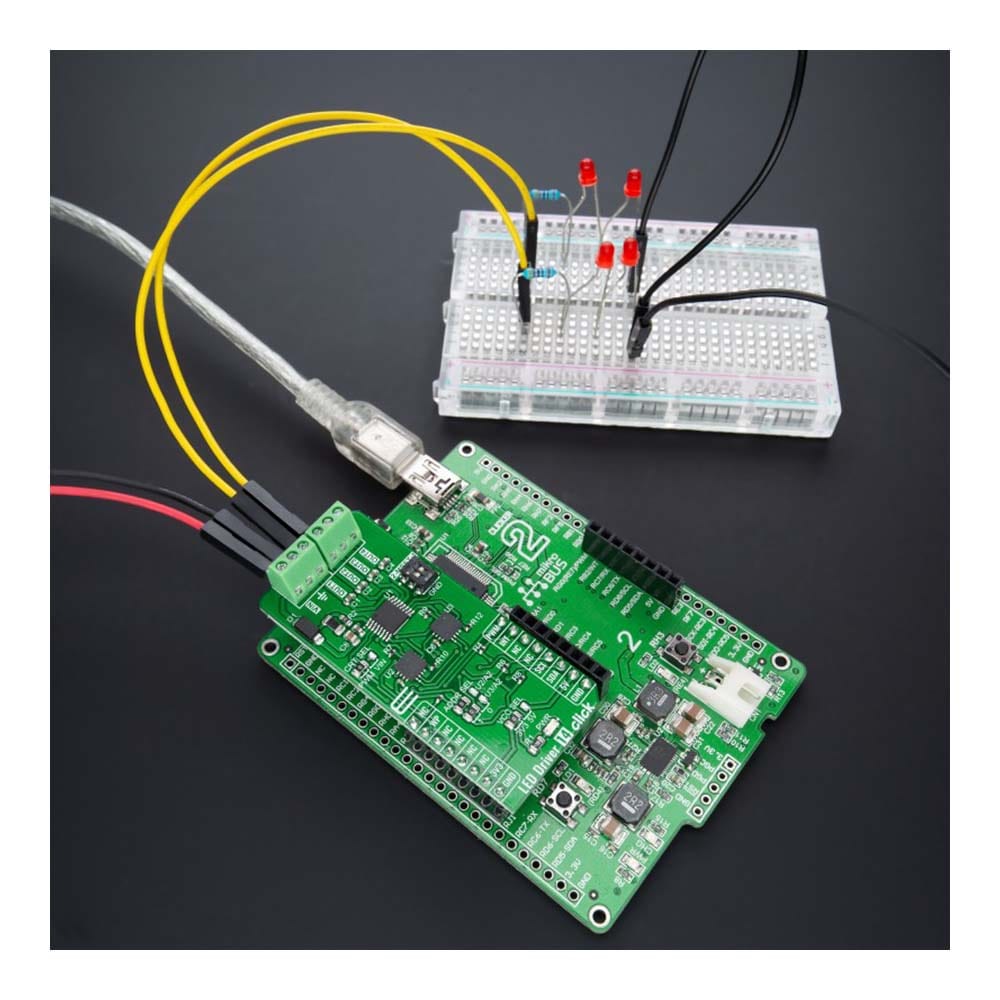
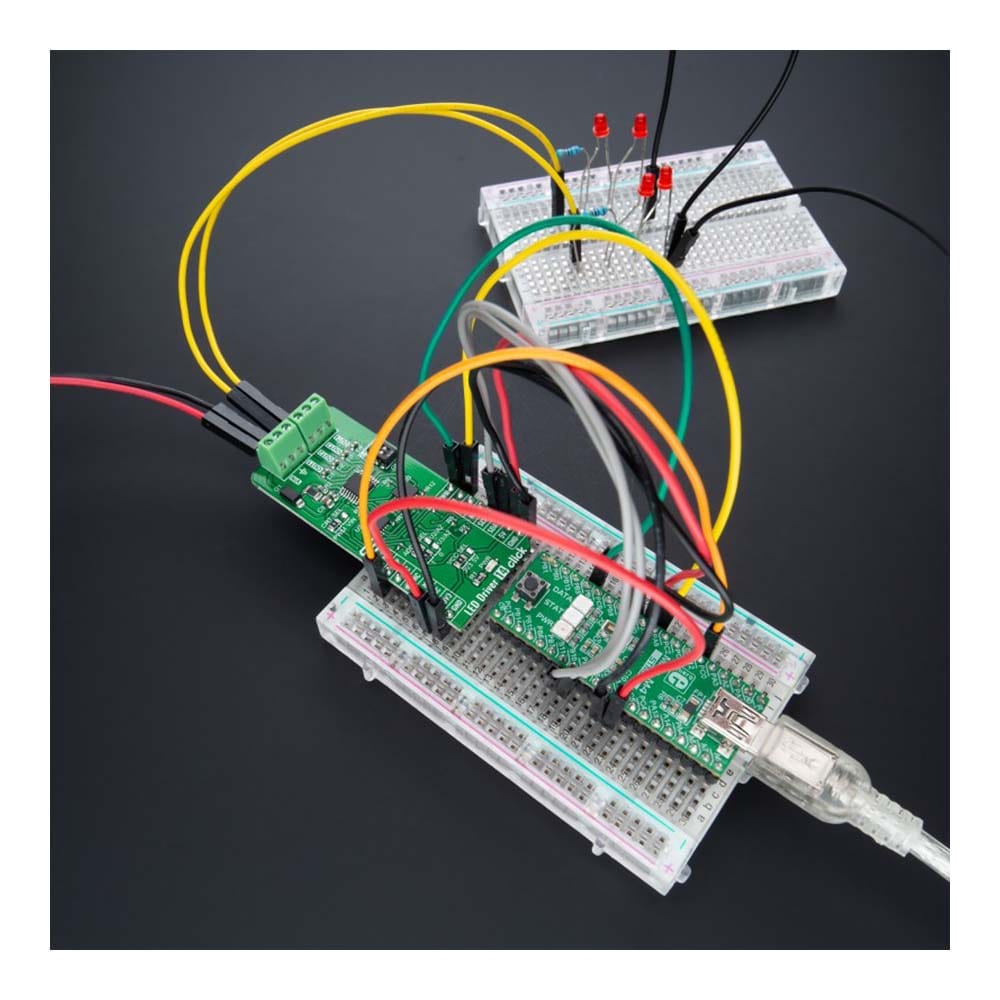
Key Features
Overview
The LED Driver 14 Click Board™ is a compact add-on board that simplifies the control of multiple LEDs. This board features the BD18337EFV-M, a reliable four-channel constant current LED driver from Rohm Semiconductor. It is powered by an external power supply in the range of 5.5V to 20V, providing a maximum output current of 150mA per channel. The BD18337EFV-M also comes with the possibility for up to 3 LEDs in series on its output OUTx pin and built-in energy sharing control, selectable operational mode, and multiple built-in protection functions that protect the circuit during abnormalities. This Click board™ is ideal for LED rear lamps (turn/stop), fog lamps, and turn signals for automotive applications.
The LED Driver 14 Click Board™ is supported by a mikroSDK compliant library, which includes functions that simplify software development. This Click board™ comes as a fully tested product, ready to be used on a system equipped with the mikroBUS™ socket.
Downloads
Le LED Driver 14 Click Board™ est une carte complémentaire compacte qui simplifie le contrôle de plusieurs LED. Cette carte comprend le BD18337EFV-M, un pilote LED à courant constant fiable à quatre canaux de Rohm Semiconductor. Il est alimenté par une alimentation externe dans la plage de 5,5 V à 20 V, fournissant un courant de sortie maximal de 150 mA par canal. Le BD18337EFV-M est également doté de la possibilité d'installer jusqu'à 3 LED en série sur sa broche de sortie OUTx et d'un contrôle de partage d'énergie intégré, d'un mode de fonctionnement sélectionnable et de plusieurs fonctions de protection intégrées qui protègent le circuit en cas d'anomalies. Cette carte Click™ est idéale pour les feux arrière à LED (clignotants/stop), les feux antibrouillard et les clignotants pour les applications automobiles.
Le LED Driver 14 Click Board™ est pris en charge par une bibliothèque compatible mikroSDK, qui comprend des fonctions qui simplifient le développement logiciel. Ce Click board™ est un produit entièrement testé, prêt à être utilisé sur un système équipé de la prise mikroBUS™.
| General Information | |
|---|---|
Part Number (SKU) |
MIKROE-4996
|
Manufacturer |
|
| Physical and Mechanical | |
Weight |
0.02 kg
|
| Other | |
Country of Origin |
|
HS Code Customs Tariff code
|
|
EAN |
8606027389276
|
Warranty |
|
Frequently Asked Questions
Have a Question?
Be the first to ask a question about this.

